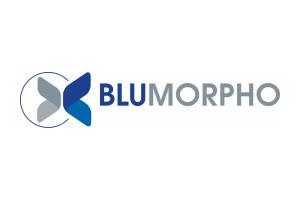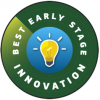MagnetoEncephaloGrapgy (MEG) machine
-
0 comments

Brain surgery requires accurate diagnosis and planning. MagnetoEncephaloGrapgy (MEG) is extremely accurate but is not widely used because it is not affordable. As a partner in the EU-funded gateoneproject, CEA LETI's research team has developed a new sensor that will cut the cost of MEG by a factor of 5. In partnership with BLUMORPHO, the Scientific coordinator of the Gateone project, a whole value chain is gathered on a roadmap for product development and commercialization that sees this technology delivering a breakthrough in the Medical field. Furthermore applications of this sensor for geological and airborne applications are also on the commercialization roadmap.
What is the innovation
The Gateone project invested into a compact Ultra-Low Noise Optically Pumped Magnetometer (ULNOPM). The 20cm3 sensor, which is protected by 19 patents, is a 10x improvement in compactness and delivers a 4 times reduction on noise. In addition, it is maintenance free and does not require cooling or heating compared to the competition. These features will enable a cost breakthrough in Magnetoencephalography (MEG) which is a unique tool for brain surgical planning but remains rarely used because of the huge infrastructure investment and cost of ownership.
About the Innovator
BLUMORPHO is an innovation accelerator working in partnership with leading European research organisations. CEA LETI is a pioneer technology research institute in micro and nanotechnologies, tailoring differentiating applicative solutions that ensure competitiveness in a wide range of markets. Both are partners in the EU-funded Gateone project. In the context of this project BLUMORPHO applied its lean innovation process to unleash the potential of CEA LETI’s Optical Pumped Magnetometer. This enabling technology will be a breakthrough in Brain Imaging.
Out of the lab – Into the Market
BLUMORPHO and CEA LETI have designed a whole ecosystem and roadmap to exploit the technology from the suppliers to multiple end users. The German SME MAGNICON is foreseen as the industrial source for the sensor and the first products available at the end of 2018 targeting customers with sensor needs in the geological sector. First customers already identified. Airborne applications will follow in early 2020 after further electronics miniaturisation. Finally, MEG will benefit from those development with commercialisation targeted in 2022.
Benefits of participation in the Framework Programme
ULNOPM is the critical milestone for a first industrialisation and exploitation step minimizing the risk for all industrial partners involved. The implementation of the sensor into a MEG (MagnetoEncephaloGraphy) will reduce the investment by factor of 5 for hospitals. MEG is an accurate tool for epilepsy diagnosis and surgery planning. Around 6M people in Europe currently have epilepsy whilst 15M will have had epilepsy in their lives. The availability of such technology at lower cost will be a game changer.
More information about the Gateone project can be found here: https://www.gateone-project.eu/

